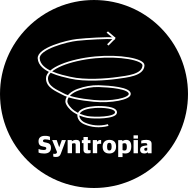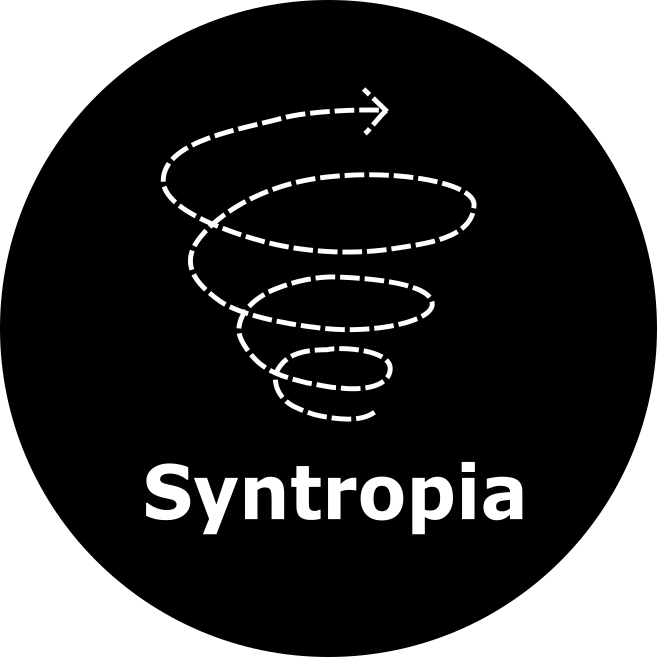How Syntropic Farming is Evolving
Syntropy is still very new, so it is evolving quickly as we find more and more applications and interest and find new ways to adapt the principals and management framework to suit many different contexts
We must remember that there is no one single way to apply Syntropy, all we must do is apply the fundamental principals as brought to us by Ernst Gotsch.
There is no dogma, nor are there limits.
Syntropic agriculture is simply a framework of planting and management according to natures rules, of species succession, of the the differing roles of plants that can be accurately observed via the framework of Syntropic Agriculture, and applied - in any way.
The dynamic which nature forms, in a complex system is limitless in the way it can manifest, but this dynamic is based on relationships, we get that part right, and like all relationships, they can express in many different ways. With Syntropy, the outcome is always the same - a self reinforcing positve feedback of life continually begetting more life. This brings all of the soil carbon, minerals, nitrogen, microbes and much, much more into this continuing increasingly complex dynamic.
We work with a concept called the “Macro Organism”, this is the result of the ever increasing dynamic interplay of life, based on mutual cooperation and unconditional love - where death is a very important part of life, and the passing of plants and plant groups occur for one reason in any intact ecosystem - they have played their role, done their job, and created conditions for the next higher level of life, always increasing in quality and quantity via species succession.
Life gives without asking.
When you add the factor of time to and ecosystem, you get species succession. To ignore this powerful force of life, is to become static, this results in continual, or increasing costs, as methods and applications are repeated, inputs are purchased, transported and applied - often suffering diminishing returns (and increasing costs via inflation).
You cannot continually increase productivity and fertility without species succession, as you will hit a ceiling - no matter how much compost, biology or any other useful input you put on - these are only aids, which lift you to a certain point, but in time you will need the ecosystem dynamic to take over and drive the increase in quality via species succession.
Nothing else can do this.
This is regenerative agriculture.
How This Is Evolving, And Where Is It Going?
After 6 years of full time R&D and application of Syntropic Agriculture, on the back of my whole life as a 5th generation farmer, with backgrounds in horticulture, orcharding, holistically managed grazing and broad acre cropping, I clearly see that we are largely out of steam when it comes to applications in agriculture. As stated earlier, we are suffering diminishing returns, plus prices of everything is going up - add that to a continual depletion of topsoil and it is clear we have a problem, money has largely been the tool that we have used, purchasing our way to production.
This is clearly ending, and right now in Australia it looks like we have another drought looming (I really hope I’m wrong here). The margins are being squeezed all across the board in farming, and we are squeezing everything we can out of everything to keep going.
But enough with the rant.
As I have been sharing my results with Syntropic Agriculture, teaching and listening deeply to the big challenges on the land, I’m finding a huge resource.
Farmers of many types are coming to me to listen to how I interpret their problems.
As I share my observations, it is clear that they are seeing that too, they have just never heard it through the lens of Syntropy.
This has drawn me strongly towards working on the land much more closely with these problems.
I have very little interest in waxing lyrical about syntropy without getting elbow deep into the solutions on the ground with people who are very concerned with the issues that I have stated above and see some type of solution in species succession managed precisely and specifically.
I am loath to turn my back on those coming to me with real needs and strong connection after I have delivered a talk etc.
It is clear to me that pathways, support and collaborative trials are needed.
We need to test, share and feed that back into further evolution of results.
We need to walk together, for real.
The models of course after course on regenerative agriculture is over as far as I’m concerened.
For me, it is just not satisfactory to simply teach a course, inspire many, and then just leave it with them - sure, this is helpful, but what if they begin their journey and start making mistakes that I have already made, that they just don’t need to (for example, successional gaps don’t just cost money, they cost time - years). What if they spend so long learning something that I already have done, and take much longer to develop than needed? Sometimes it is just the simplest bits of advice that can make a very transformative difference.
On saying that, mistakes are very important for learning, and discovery by oneself is very important, but what we can avoid is too much repetition of the same mistakes, dure to isolation and lack of connection.
So this is how it is all seeming to me now after 6 years.
More organic and self organised collaboration and collective discovery is the answer it seems to me.
What Am I Going To Do?
I am going to improve the way I share and teach, I am going to do more collaborative trials in partnership with landholders.
No longer am I going to just share stuff from my farm.
I have been doing the standard 4 day Syntropic Agriculture course, but it has its problems.
These are: it is intense, the information is constant, thick and fast. I often feel frustrated that I cannot get the full understanding across during the course, and this is natural. Syntropy is a complex interconnected dynamic, and although there are only a few elements, the way they combine is powerful and complex - it is a continual space and time dynamic.
Many of us, including myself had to do the same course 3-4 times before really getting a handle on it.
But the real learning comes after one has understood the principals and begins doing it and engaging in the conversation with peers.
This is only part of the problem, sure it is vital to understand the principals fully, but we also need engage practically, in groups, with guidance.
I believe that slamming people with a concentrated form of dense information is overwhelming, this doesn’t mean that it isn’t any good, I have had a lot of gratitude shared with me about experiences with these course, but they are not the beginning and end.
A better, slower, more guided form of teaching coupled with practical experience where the principles are continuously applied, in groups, coupled with good dialogue is needed.
With real world working examples!
So what I am now doing is collaborating with projects around Australia, and internationally to create a circuit of field days.
I will work with each project, solving problems together, and making it an open day.
I will keep these alive - I will revisit and we will regroup.
Through this process we will discover, revise share and continue the conversation, see the results and consolidate the understanding.
I don’t know how these will be funded, nor do I really care at this point, it just needs to be done because there are real needs out there.
What about the theoretical information that is critical to understanding and applying? - I’m glad you asked! I cannot forsake the classroom learning, it it vital, we don’t want to miss an element in this very powerful dynamic and end up with a lame duck.
What I have done is began a big upgrade of The Syntropic Workshop, the online learning platform. After teaching many more courses since it’s inception, I have learned how to improve it in a much more easy to understand way.
The Syntropic Workshop has the courses that I teach face to face embedded in as an online course.
Due to the follow up support, The Syntropic Workshop. has eliminated over 80% of the needs for consultations that I have had requests for, saving a lot of money.
This means that you can do the theory online, revise it at any time and pace yourself. This means you can visit a field day and not have to have done a course - you can hear all of the jargon, become familiar with the concepts, go back home, log on to the platform and learn away, in a relaxed and inspired manner.
Plus all of the info we discover and share on the field days will be uploaded to The Syntropic Workshop for you to revise again, and much more than that, follow the other field days!
To me this approach is much more effective and the feedback I am getting so far is supporting this.
The Syntropic Workshop has practitioners from all around the world, in every continent, and there are some great successes achieved simply through being a student there.
There is an active community chat, plus I do a weekly Q&A, often solving knotty problems quickly, which can be otherwise costly.
This is not a rant to sell subscriptions to The Syntropic Workshop, I am genuinely sharing a much cheaper and effective form of learning that is constantly improving and developing, while being coupled with practical demonstrations and engagement.
Conclusion
This is where I have got to now - real needs for real results, support, demonstration and collaboration. I have simplified my farm to allow time to do this, a rising tide floats all boats.
Funnily enough, having to take time away from my farm to support others has been a blessing in disguise - it has made me a much better manager and enabled me to see how easy that this can actually get!


